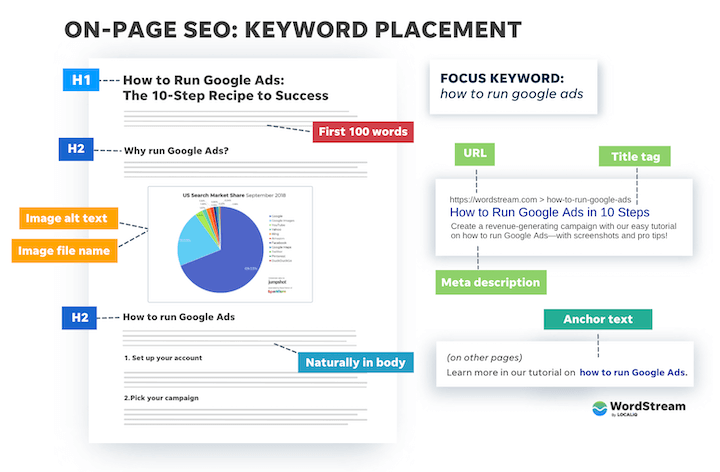Unlock the secrets to boosting your blog’s visibility and reach with this comprehensive guide to SEO for blog posts.

Image courtesy of via DALL-E 3
Table of Contents
Introduction to SEO
SEO, which stands for Search Engine Optimization, is a crucial aspect of creating and sharing content online. In this guide, we will delve into the world of SEO and why it is vital for blog posts. Let’s unravel the mysteries of SEO together!
What is SEO?
SEO is like a map that helps search engines like Google find your blog posts. Just as you use a map to find your way around, SEO guides search engines to display your content to people looking for information on the internet. It’s all about making sure your blog post is easily discoverable by those who need it.
Why is SEO Important?
Imagine your blog post is a book in a library. If the book is placed in the wrong section where nobody looks, it won’t be found by readers. SEO ensures that your blog post is categorized correctly in the vast library of the internet so that more people can stumble upon it and benefit from your valuable content. Without SEO, your masterpiece might go unnoticed in the sea of information online.
Finding the Right Keywords
Keywords are like magic words that help search engines, like Google, find your blog posts. By using the right keywords, you can make sure that your blog reaches the right audience. Let’s dive into how you can discover these keywords and use them effectively in your blog posts.
What are Keywords?
Keywords are simply the words or phrases that people type into search engines when they’re looking for something specific. For example, if someone is searching for the best chocolate cake recipe, they might type in “delicious chocolate cake recipe” or “easy chocolate cake instructions.” These words are the keywords that can lead them to your blog post if you use them wisely.
How to Find Good Keywords?
There are many tools available online that can help you find popular keywords related to your blog topic. You can also use common-sense tricks like imagining what words you would type into a search engine if you were looking for your own blog post. By putting yourself in the shoes of your potential readers, you can uncover the keywords they’re likely to use.
Using Keywords in Your Blog
Once you’ve identified the right keywords for your blog post, it’s essential to strategically place them throughout your content. Make sure to include your main keywords in your blog post title, headings, and within the body of your text. This way, search engines will recognize the relevance of your post to the topic people are searching for.
Writing Quality Content
When you sit down to write a blog post, it’s important to focus on creating high-quality content that will engage and inform your readers. Quality content is the backbone of a successful blog, so let’s delve into some key tips for writing content that stands out.

Image courtesy of aioseo.com via Google Images
Writing for Your Readers
One of the most crucial aspects of creating quality content is writing for your audience. Think about who your readers are and what they would find interesting or useful. Use simple language that everyone can easily understand, and structure your writing in a way that is engaging and enjoyable to read.
Adding Unique Information
To make your content truly stand out, consider adding unique information that others may not have. This can be personal experiences, in-depth research, or a fresh perspective on a topic. By offering something new and valuable to your readers, you can establish yourself as an authority in your niche and keep your audience coming back for more.
Using Headings and Subheadings
In the world of blogging, using headings and subheadings is like creating a roadmap for your readers to navigate through your content. Just as road signs help you find your way on a trip, headings and subheadings guide your readers through your blog post.
What are Headings and Subheadings?
Headings and subheadings are like titles and subtitles for different sections of your blog post. They help break up your content into smaller, more manageable parts. Headings are usually bigger and bolder, while subheadings are slightly smaller but still stand out. Think of them as the labels on different sections of a map.
How to Use Headings Properly?
When using headings and subheadings, it’s essential to place them strategically throughout your blog post. Headings should introduce new topics or main ideas, while subheadings can further break down those ideas into more specific points. This structure not only makes your content easier to read but also helps search engines understand the organization of your post.
Adding Images and Multimedia
When you write a blog post, it’s not just about the words you use. Images and multimedia can make your post more engaging and interesting for your readers. Let’s dive into how you can effectively use images and other media in your blog post to improve its appeal and search engine optimization.

Image courtesy of www.wordstream.com via Google Images
Choosing the Right Images
Images play a crucial role in making your blog post visually appealing. When selecting images for your post, it’s essential to pick ones that are relevant to your content and capture your readers’ attention. High-quality, eye-catching images can help break up text, illustrate your points, and make your post more shareable on social media.
Using Videos and Other Media
Aside from images, you can also incorporate videos, podcasts, infographics, or other multimedia elements to enhance your blog post. These formats can help you explain complex concepts, add variety to your content, and keep your audience engaged. By including different types of media, you can cater to a wider range of preferences and make your post more informative and entertaining.
SEO for Images
Did you know that search engines can’t “see” images like humans can? This is why it’s crucial to optimize your images for SEO by using descriptive filenames and alt text. Including relevant keywords in your image attributes can help search engines understand the content of your images and improve your chances of being found in image searches. By properly optimizing your images, you can boost the overall SEO of your blog post.
Linking Inside and Outside Your Blog
When you link inside and outside your blog, you’re creating connections that can boost your blog’s performance on search engines like Google. Let’s dive into why linking is so important and how you can make the most of it.
What are Internal Links?
Internal links are like pathways within your blog that lead readers from one page to another. They help search engines understand the structure of your site and can improve the user experience by guiding visitors to more relevant content. For example, if you mention a previous blog post in your current article, you can link to it using an internal link.
What are External Links?
External links, on the other hand, take your readers to other websites. When you link to reputable sources or related websites, it adds credibility to your blog. Plus, search engines see these links as a sign of your blog’s authority on the topic you’re discussing. So, if you’re citing a study or referencing a news article, consider adding an external link.
Tips for Effective Linking
Now that you know the difference between internal and external links, let’s talk about how to use them effectively. When choosing which posts to link to internally, aim for relevance. Link to articles that expand on the current topic or provide additional information. For external links, look for reputable sources that add value to your content.
Making Your Blog Post Easy to Read
When writing your blog post, it’s important to use simple language that everyone can easily understand. Instead of big, fancy words, try to use everyday language that you would use when talking to your friends. This way, more people will be able to enjoy and learn from your blog.

Image courtesy of trioseo.com via Google Images
Keeping Sentences Short
Short sentences are like bite-sized pieces of information that are easy to digest. Long, complicated sentences can make it hard for readers to follow along. So, try to keep your sentences short and to the point. This will make your blog post much easier to read!
Breaking Up Text
Chunky paragraphs of text can be overwhelming for readers. To make your blog post easier to read, try breaking up the text with bullet points, lists, or short paragraphs. This not only makes your post visually appealing but also helps readers scan through the information more efficiently.
Final Check Before Publishing
Before you hit that publish button, it’s crucial to give your blog post a final look for any spelling or grammar mistakes. You want your post to be clear and professional, so take the time to edit and proofread it carefully. You can ask for help from a friend or use tools like spell check to catch any errors.
SEO Checklist
It’s not just about the content; you also need to make sure your blog post is optimized for search engines. Here’s a quick checklist to run through before publishing:
- Are your keywords strategically placed throughout your post?
- Have you used headings and subheadings to break up your content?
- Did you include relevant images with descriptive alt text?
- Have you linked to both internal and external sources?
- Is your blog post easy to read with short sentences and simple language?
By checking off these items on your SEO checklist, you’ll ensure that your blog post is not only well-written but also optimized for search engines to discover and rank.
Conclusion
In this complete guide to SEO for blog posts, we have learned valuable tips on how to optimize our content for search engines and attract more readers. Let’s recap the key points discussed:

Image courtesy of www.tabsite.com via Google Images
Recap of SEO Tips
We started with understanding what SEO is and why it is important for blog posts. SEO acts as a map for search engines to find your content, much like placing a book in the right section of a library so more people can discover it.
Next, we explored the significance of finding the right keywords to include in our blog posts. Keywords are the words people type into search engines to find information, and using popular keywords strategically can improve our visibility online.
We also delved into the importance of writing quality content that is informative and engaging for our readers. By adding unique information and personal experiences, we can create content that stands out and keeps our audience interested.
Furthermore, we learned how to structure our blog posts using headings and subheadings to make them more organized and easier to read. Breaking up text with headings helps to highlight main points and improve the overall readability of our content.
Additionally, we explored the benefits of including images and multimedia in our blog posts to make them more visually appealing. Choosing the right images and using videos or other media can enhance the reader’s experience and keep them engaged.
We also discussed the importance of linking inside and outside our blog posts to improve SEO. Internal links help guide readers to other relevant content on our blog, while external links provide valuable external resources and increase the credibility of our content.
Lastly, we highlighted the significance of writing in simple language, keeping sentences short, and breaking up text to improve readability. By editing and proofreading our content before publishing, we can ensure a polished and error-free blog post that resonates with our audience.
Final Thoughts
As we conclude this guide, remember to put these SEO tips into practice and enjoy the process of writing your blogs. By implementing these strategies, you can enhance your online presence, attract more readers, and ultimately achieve success in the world of blogging. Happy writing!
Want to turn these SEO insights into real results? Seorocket is an all-in-one AI SEO solution that uses the power of AI to analyze your competition and craft high-ranking content.
Seorocket offers a suite of powerful tools, including a Keyword Researcher to find the most profitable keywords, an AI Writer to generate unique and Google-friendly content, and an Automatic Publisher to schedule and publish your content directly to your website. Plus, you’ll get real-time performance tracking so you can see exactly what’s working and make adjustments as needed.
Stop just reading about SEO – take action with Seorocket and skyrocket your search rankings today. Sign up for a free trial and see the difference Seorocket can make for your website!
Frequently Asked Questions (FAQs)
What is the Best Way to Find Keywords?
When you want to find keywords for your blog post, think about what words or phrases someone might type into a search engine to look for information like what you’re writing about. You can use tools like Google Keyword Planner to see how often certain words are searched, or simply put yourself in the reader’s shoes and think about what you would search for.
How Often Should I Use Keywords?
It’s important to use keywords naturally in your blog post. You should include them in your title, headings, and throughout your content, but don’t overdo it. If you use the same keywords too many times, it can make your writing sound awkward or spammy. Aim for a good balance so your post is easy to read and understand.
Why are Links Important?
Links, both internal and external, play a crucial role in improving your blog’s SEO. Internal links help readers navigate your site and discover more content, while external links to reputable sites provide additional information and increase the value of your post. Search engines also use links to determine how credible and authoritative your content is, so including relevant links can boost your SEO rankings.







